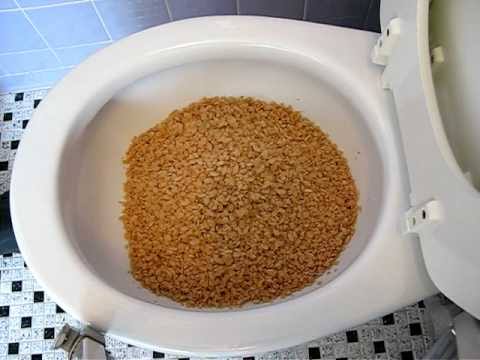Is it Prudent to Flush Food in the Toilet?
Is it Prudent to Flush Food in the Toilet?
Blog Article
The writer is making a number of great pointers on Is it safe to flush food (especially rice) down the toilet? overall in the article on the next paragraphs.

Intro
Many people are commonly confronted with the issue of what to do with food waste, especially when it comes to leftovers or scraps. One typical concern that develops is whether it's okay to purge food down the bathroom. In this article, we'll explore the reasons people might consider flushing food, the consequences of doing so, and different methods for proper disposal.
Reasons people may take into consideration purging food
Absence of recognition
Some people might not recognize the prospective harm caused by purging food down the bathroom. They might erroneously think that it's a safe technique.
Convenience
Flushing food down the toilet might look like a quick and very easy service to taking care of undesirable scraps, specifically when there's no close-by garbage can readily available.
Idleness
Sometimes, people may just select to flush food out of sheer negligence, without thinking about the effects of their actions.
Effects of flushing food down the toilet
Ecological impact
Food waste that ends up in waterways can add to pollution and harm water communities. Furthermore, the water made use of to purge food can stress water resources.
Pipes concerns
Purging food can cause stopped up pipelines and drains pipes, causing expensive plumbing repair services and troubles.
Types of food that need to not be flushed
Fibrous foods
Foods with fibrous appearances such as celery or corn husks can obtain tangled in pipes and cause blockages.
Starchy foods
Starchy foods like pasta and rice can absorb water and swell, causing obstructions in pipes.
Oils and fats
Greasy foods like bacon or food preparation oils must never be purged down the bathroom as they can solidify and create clogs.
Appropriate disposal methods for food waste
Making use of a waste disposal unit
For homes geared up with waste disposal unit, food scraps can be ground up and flushed through the plumbing system. Nonetheless, not all foods are suitable for disposal in this manner.
Recycling
Specific food packaging products can be reused, minimizing waste and reducing ecological impact.
Composting
Composting is an environmentally friendly means to throw away food waste. Organic products can be composted and used to improve soil for gardening.
The relevance of appropriate waste management
Lowering environmental damage
Proper waste management methods, such as composting and recycling, assistance lessen air pollution and protect natural resources for future generations.
Securing pipes systems
By staying clear of the method of flushing food down the toilet, house owners can avoid expensive plumbing fixings and keep the stability of their pipes systems.
Verdict
In conclusion, while it might be tempting to purge food down the bathroom for benefit, it is very important to understand the potential effects of this activity. By adopting correct waste monitoring practices and getting rid of food waste properly, individuals can add to healthier pipes systems and a cleaner setting for all.
THINK TWICE BEFORE FLUSHING FOOD DOWN YOUR TOILET IN FALLBROOK CA
Let’s be honest, we’re really supposed to be tossing rotten or leftover food in the compost bin or trash can. But many people like to place scraps of food down the drain of, say, their kitchen sink. That’s why the garbage disposal was invented: so we can continue to place certain foods down the drain without clogging our drain in the process. Smart.
But not all of us have the luxury of having a garbage disposal installed. So, you might continue to shove food down your sink drain anyway – or worse: you might flush them down your toilet! If you’re guilty of doing the latter, you’re going to want to stop, and here’s why:
Toilet Drains Aren’t Designed to Handle Food!
There’s your answer: food just doesn’t belong in your toilet. It may seem like your toilet drain is wider than the drains of your sinks, but truth be told, that isn’t actually the case. The narrower pipes of your toilet leave your plumbing at risk for clogging if you do happen to flush your food. In addition, food doesn’t break down as quickly that toilet paper and human waste do. In turn, this leaves your toilet at risk for a nasty clog.
Although a flush of a tiny pinch of food every now and then isn’t going to completely damage your toilet, there are certain foods that should absolutely not be flushed in your toilet at all. These include starchy foods like mashed potatoes, grains, hard pieces of food that are slow to break down, and fats and oils.
The latter categories of food are particularly problematic as they may harden, expand as they absorb water, break down slowly in your system, or generally create the perfect obstruction with their gelatinous composition. These are all things you don’t want in your plumbing system!
Experiencing a Toilet Clog?
Nobody’s perfect, and we all make mistakes. Sometimes one of the mistakes people make is flushing food down their toilet and later realizing that it wasn’t the best thing to do once they see that their toilet is now clogged. Uh-oh!

As a passionate person who reads on What Can Happen If You Flush Food Down the Toilet?, I was thinking sharing that segment was really helpful. Sharing is caring. Helping people is fun. Kudos for your time. Revisit us soon.
About This Report this page